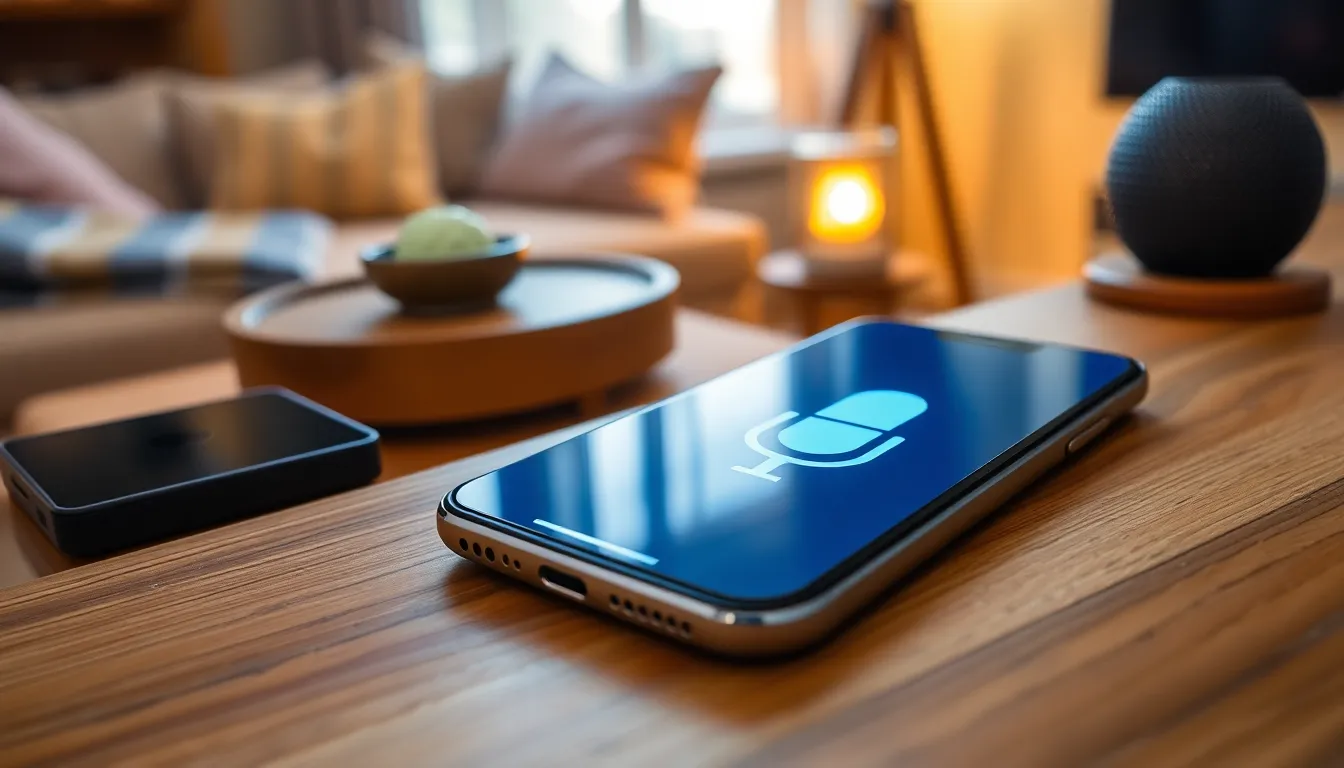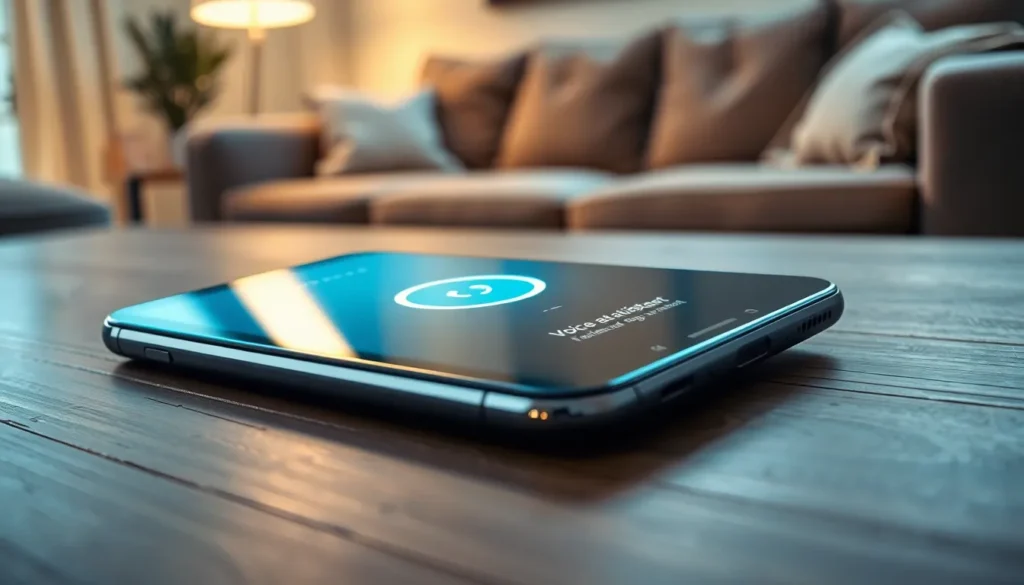Table of Contents
ToggleIn a world where smartphones seem to know what users want before they even say it, it’s hard not to feel a little spooked. Is that a helpful assistant or just a nosy eavesdropper? From targeted ads popping up right after a casual conversation to those uncanny suggestions on streaming services, phones have a knack for making users question their privacy.
With every “Hey Siri” or “OK Google,” it feels like these devices are tuning in to more than just commands. Are they really listening, or is it all just a coincidence? As technology advances, the line between convenience and invasion blurs. Buckle up as we dive into the curious case of phones listening to us, where the truth might be stranger than fiction—and a little funnier too.
Overview of Phones Listening to Us
Many users express concern over smartphones appearing to listen and respond to conversations. Smartphones often track user data to enhance personalized advertising. The integration of voice-activated assistants like Siri and Google Assistant raises privacy questions. These devices utilize microphones that remain on to capture voice commands. Some users wonder if a constant state of listening leads to unauthorized eavesdropping.
Data collection practices by companies can contribute to this perception. Analytics indicate that nearly 60% of individuals believe their devices listen to them. The ambiguity of whether this feature provides genuine assistance or intrudes on privacy persists. Some studies suggest voice data is only processed after activation words are spoken, which could alleviate fears.
Privacy policies may vary across different manufacturers and applications. Users commonly overlook the permissions granted to apps, often allowing microphones access without realizing. Some manufacturers have integrated features to disable microphone access entirely. Setting these controls can help ensure a more secure user experience.
Coincidences may fuel paranoia, as users frequently encounter targeted advertisements shortly after discussions. Algorithms analyze search patterns and social media interactions, heightening the feeling of surveillance. Real-time data processing contributes to this phenomenon, linking conversations to ads seen later.
Understanding these mechanisms helps clarify how targeted advertising works. Awareness of permission settings can empower users to make informed choices. Transitioning toward increased transparency in data practices may benefit both consumers and companies. Maintaining a balance between convenience and privacy represents a significant challenge in today’s tech landscape.
How Phones Listen

Smartphones utilize advanced technology that allows them to capture audio. Users often question how much of their conversations are overheard.
Microphone Functionality
Smartphones contain built-in microphones designed to pick up sound. This hardware remains active to detect voice commands. Manufacturers often specify when these microphones are on, yet users may not realize their devices listen continuously. Certain settings allow microphones to operate even when apps run in the background. Privacy concerns arise as these functionalities could lead to unauthorized data collection. Transparency regarding microphone usage remains essential in addressing user fears.
Activation Methods
Voice-activated assistants rely on specific activation phrases to initiate listening modes. Common phrases like “Hey Siri” or “OK Google” signal the device to process audio. When spoken, the microphones engage and record voice commands. Users often assume that devices only listen after these phrases, yet the potential for accidental triggers exists. Misunderstandings about activation methods may cause users to feel their phones listen more than intended. Developers continuously refine these features to improve user experiences while addressing privacy apprehensions.
Privacy Concerns
Users often express discomfort about their smartphones eavesdropping on conversations. Devices extensively collect data, which raises significant privacy issues.
Data Collection Practices
Manufacturers deploy various techniques to gather user data. Location tracking, app usage statistics, and microphone access represent some methods. These practices enhance services like targeted advertising yet raise alarms about potential misuse. Over half of users worry their devices pick up private conversations, emphasizing the need for responsibility regarding data handling. Research indicates many app developers utilize permissions for microphone access, reflecting a widespread trend. Adequate transparency in these data collection practices could alleviate user concerns and foster trust.
User Consent and Awareness
Awareness of app permissions remains limited among users. Many grant access to microphones without understanding the implications. Devices frequently request permissions during installation, but users often accept them quickly. Regular reminders about permissible accesses could empower consumers. Users benefit from reviewing privacy settings to regain control over their data. Furthermore, encouraging updates on privacy policies ensures that users remain informed about how their data is used and shared. Regular audits of permissions can enhance user awareness and foster a more secure digital environment.
The Debate Around Surveillance
The topic of smartphone surveillance prompts strong opinions on both sides. Users express concerns about privacy, while others view it as a necessary feature of modern technology.
Arguments For Surveillance
Proponents argue that surveillance enhances user experience. They point to personalized ads and suggestions as helpful tools that streamline daily tasks. Companies maintain that data collection allows for better service customization, leading to increased customer satisfaction. Many users appreciate voice-activated assistants for their convenience, arguing that the benefits outweigh privacy concerns. According to research, 60% of individuals believe their devices listen, reinforcing the idea that active monitoring aids functionality. Advocates emphasize transparency in data usage, suggesting that informed consent can address many privacy apprehensions.
Arguments Against Surveillance
Opponents raise significant concerns about privacy violations. Fears about unauthorized eavesdropping dominate discussions, especially when users realize that microphone access is often granted unknowingly. Many individuals feel uneasy knowing their conversations could be recorded without consent. They argue that omnipresent surveillance infringes on personal freedom and creates an atmosphere of distrust. With over half of users concerned about their devices picking up private discussions, the call for stricter regulations on data collection has intensified. Advocates for privacy emphasize the need for robust user controls and greatly improved transparency surrounding app permissions.
Preventing Unwanted Listening
Users can take proactive steps to minimize unwanted listening by adjusting settings and managing application permissions. Understanding device options and being vigilant about app usage can greatly enhance privacy.
Security Settings on Devices
Adjusting security settings proves essential for protecting privacy. Access device settings to find microphone controls. Users can disable microphones entirely or limit access to specific applications. Reviewing software updates regularly enhances security measures. Activating features like “mute” during sensitive conversations offers an added layer of protection. Familiarity with built-in privacy settings enables users to maintain control over their devices. Some smartphones now include indicators for active microphones, providing transparency about when listening occurs.
Third-Party Applications
Evaluating third-party applications helps reduce potential privacy risks. Users must check permissions requested by apps before installation. Currently, many popular apps request microphone access, often without justification. Research shows that understanding permissions can limit unnecessary data collection. Deleting apps that consistently raise privacy concerns can safeguard conversations. Regular audits of installed applications identify those that may compromise user privacy. Users should prioritize applications from reputable developers with transparent privacy practices. Staying informed about app updates and changes in privacy policy keeps users aware of data handling practices.
The concerns surrounding smartphones listening to users underscore the delicate balance between convenience and privacy. As technology advances, individuals must remain vigilant about their digital interactions. By understanding app permissions and adjusting settings, they can take control of their privacy.
The call for greater transparency in data practices is more critical than ever. Users should be proactive in reviewing their privacy settings and evaluating the applications they use. Ultimately, fostering a secure digital environment requires awareness and responsibility from both consumers and manufacturers.







